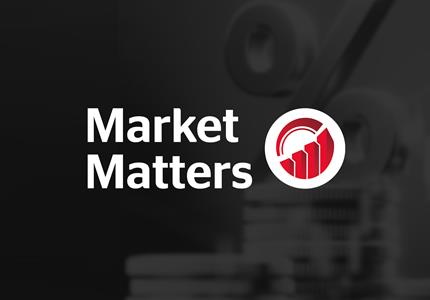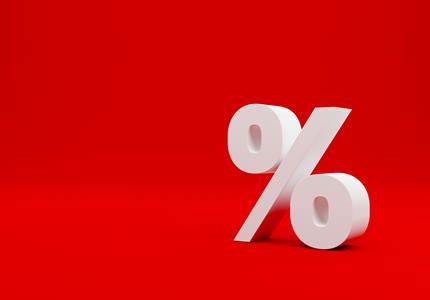

Boscher's Big Picture - Will the economic and market recovery continue?
The global economy and financial markets have been through an extremely compressed cycle over the past few months. We have seen an unprecedented economic contraction, a collapse in equity prices, resulting in the quickest bear market on record, a remarkable recovery in stock markets and a huge injection of fiscal and monetary stimulus. Investor sentiment has also gone through a roller coaster ride, moving from being bullish in January to apocalyptic in March, back to a cautious optimism and then more recently, renewed fears.
Many strategists and well-known investors are predicting that markets will retest their March lows or have another significant collapse. Popular concerns include a possible second wave of infections, an apparent disconnect between recovering equities and contracting economic activity, tensions between the US and China, and the November US election. The economic gloom has not been helped by the latest IMF outlook lowering its forecast for global growth for this year from -3% (in March) to -4.9%. They are also projecting that the recovery will be more gradual than previously assessed with a higher-than-usual degree of uncertainty around these forecasts.
I remain optimistic that world economic activity and financial assets can continue to make progress over the next few months, but I expect volatility to stay elevated and market leadership to change. The decisive shift in monetary and fiscal policy is a massive support for both the economy and markets.
Historically, equities and other risk assets usually benefit when a surge of liquidity is pushed into a weak but recovering economy coupled with falling inflation, extremely low interest rates and high unemployment. We saw that after the bursting of the Dotcom bubble in 2000 and the 2008 Great Financial Crisis (GFC). Some believe that the huge expansion of new money will cause inflation. However, as I argued in a recent article, inflation stems from aggregate demand exceeding supply and COVID-19 is primarily a deflationary shock, since it has resulted in a collapse in both consumer spending and capital investment at the same time as supply chains have been interrupted. Even if consumption and investment recover faster than expected as economies emerge from lockdown, the anecdotal evidence from China is that the supply side will likely recover at a much faster rate than demand. This will keep inflation low and so price deflation in the US and Europe is a possibility before this cycle ends.
This “sweet spot” for risk assets could last for some time. Jerome Powell, the Fed chair, has recently made it clear that the Fed would keep interest rates at zero until 2022 at least. With 21 million American unemployed workers and inflation tumbling, the Fed will keep policy extraordinarily accommodative for a long time, according to Powell. This will include additional stimulus if needed and the Fed will ensure that the government can finance its enormous spending and investment plans as cheaply, and for as long, as possible.
The Fed made the mistake of tightening prematurely after the GFC and is unlikely to make the same mistake this time around. Other global central banks will do the same. This money has to go somewhere and the most likely home for this newly created liquidity is asset markets, at least until such time as the global economy is strong enough to need it. In the meantime, investors are faced with negative real yields on bonds and money market instruments. Institutional investors are under pressure to reduce their high cash balances and take on more risk to find better returns.
There are genuine concerns that a second wave of infections will occur as economies reopen, border controls are relaxed and as people become less concerned about physical distancing. Certainly this is a real risk and the renewed spike in infections across America’s south western states has spooked investors. However, this is not really a second wave, but a continuation of the first wave. The root cause of these new trends is that many of these states have prematurely opened their economies without strict social distancing guidelines. The evidence from Europe and Asia, where lockdown exits are largely proceeding without incident, confirms this viewpoint. In any case, moving forward it is likely that policymakers will try to strike a balance between public health needs and economic interests, even if a serious second wave does emerge. Although it is difficult to make sense of all of the information, especially given that top scientists have different and competing views, countries are in a much better position to manage the virus. Hospitals are better prepared, testing capacity has increased dramatically, contact-tracing is being ramped up, immunity is building and money and effort is pouring into finding treatments and vaccines. This means that governments, businesses and consumers are better equipped to deal with another outbreak than they were several months ago.
There is a good chance that the global economy will reopen faster than most people think, partly because the cost of lockdown is far too expensive, relative to the risk, and also because pent up demand is considerable and the healthcare capacity to manage continuing infections is in a much stronger position.
Of course, there remain a lot of risks surrounding COVID-19 and many unknowns. A dangerous second wave could occur but as argued above, the resulting policy response would likely be different from first time and the financial and economic damage would probably be far less than the first wave. Another risk is that the China-US strife is intensifying once again. At present, Trump seems to have backed off from upping the ante but this could change as we approach the US election and he feels that he needs a political lift or a scapegoat to blame for the economic demise. Also, we need to remember that increased tensions between the world’s two biggest economies and super powers are here to stay and likely to intensify over the coming years. It’s also unclear at this point whether China can fulfil its part of the trade deal meaning that a Sino-US trade war could easily be rekindled.
The November US election is also an increasing risk. Although Trump has alienated a large part of the US and global population, a win for Joe Biden and a Democrat-controlled House could set off alarm bells for the stock market. Investors would likely fear higher taxes, more regulation and an avalanche of social programmes. Having said that, this would be a bit of a two-edged sword since a Biden administration would likely be less confrontational or unpredictable on the global stage, which could help rebuild trust and cooperation between the US and its allies.
Europe also remains a threat for markets given the fact that this crisis has once again highlighted the already yawning divide between the Eurozone’s northern and southern members at a time of severe economic pain and tragic human suffering. However, very importantly, the regions’ senior policy makers, led by Angela Merkel and Germany, seem to have recognised this threat and have acted quickly and aggressively in an effort to lessen the risk. The region has shown strong political support for the ECB’s extremely accommodative monetary policy, injected huge fiscal stimulus into the economy and are seeking to establish a potentially game-changing approach to common debt through the medium of the European Commission. In essence, the worst financial crisis since WWII has galvanised European policy makers and forced them to take the drastic and required action that markets have been demanding for some time.
Markets have recovered surprisingly well over the past few months and this does look strange when compared to the economic gloom and continuing threat from COVID-19. However, assuming that the lockdown exits proceed as expected, we are through the trough of the economic collapse and the most recent data emerging from Asia, Europe and the US would seem to suggest that activity is picking up quicker than expected.
Markets are also a discounting mechanism and are looking forward to the anticipated powerful recovery in the global economy which will be fuelled by unprecedented liquidity in the system, near zero financing costs and pent up demand. As we have seen so many times in the past, it always feels very uncomfortable for the majority of investors when markets “climb a wall of worry” and this time is unlikely to be any different.
There are plenty of reasons to be cautious, and we will almost certainly see bouts of volatility and market weakness along the way. It will also be interesting to learn more about the challenges that companies are facing when they report their second quarter results in the next few weeks and, in particular whether management have any more clarity on the future outlook.
However, for longer-term investors it makes sense to focus on the opportunities available across a range of equity themes including technology, healthcare, emerging markets and undervalued UK assets.
For most investors, it also makes sense to retain sufficient hedges in place against some of the perceived risks including a weaker-than-expected growth environment or the emergence of rising inflation sooner.


